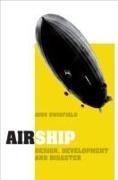Read more
@00000373@Airship@00000155@ charts the history of lighter-than-air craft from the continental pioneers of the late 19th century through to European airship stations in the Great War, Germany's pre-eminent commercial and military zeppelins, the construction of British behemoths @00000373@R100@00000155@ and its sister ship @00000373@R101@00000155@ and the calamitous losses of USS @00000373@Akron@00000155@ in 1933 and LZ129 @00000373@Hindenburg@00000155@ in 1937, events which ultimately heralded the end of large-scale airship production. The historical development of airships was protracted and fractious, as the armed forces of leading European and US powers toyed with commercial propositions while trying to bend them to military uses. John Swinfield examines the axial role of Count Zeppelin, the development of the Zeppelin in Germany as bomber and reconnaissance craft, and the way the British Admiralty, French, Italian and American engineers attempted to imitate German design. The airship coincided with a time of international strife: mass unemployment, general strikes, the Wall Street Crash and the growing shadow of fascist tumult. @00000373@Airship@00000155@ draws on original sources, official documents and private letters including interviews with figures like Mary Stopes-Roe, daughter of the airship builder Barnes Wallis. It identifies and analyses the central themes and bold personalities of the era: forming a text that is readable, entertaining and authoritative. The book is fully referenced with newly discovered first-hand material and a detailed bibliography.

